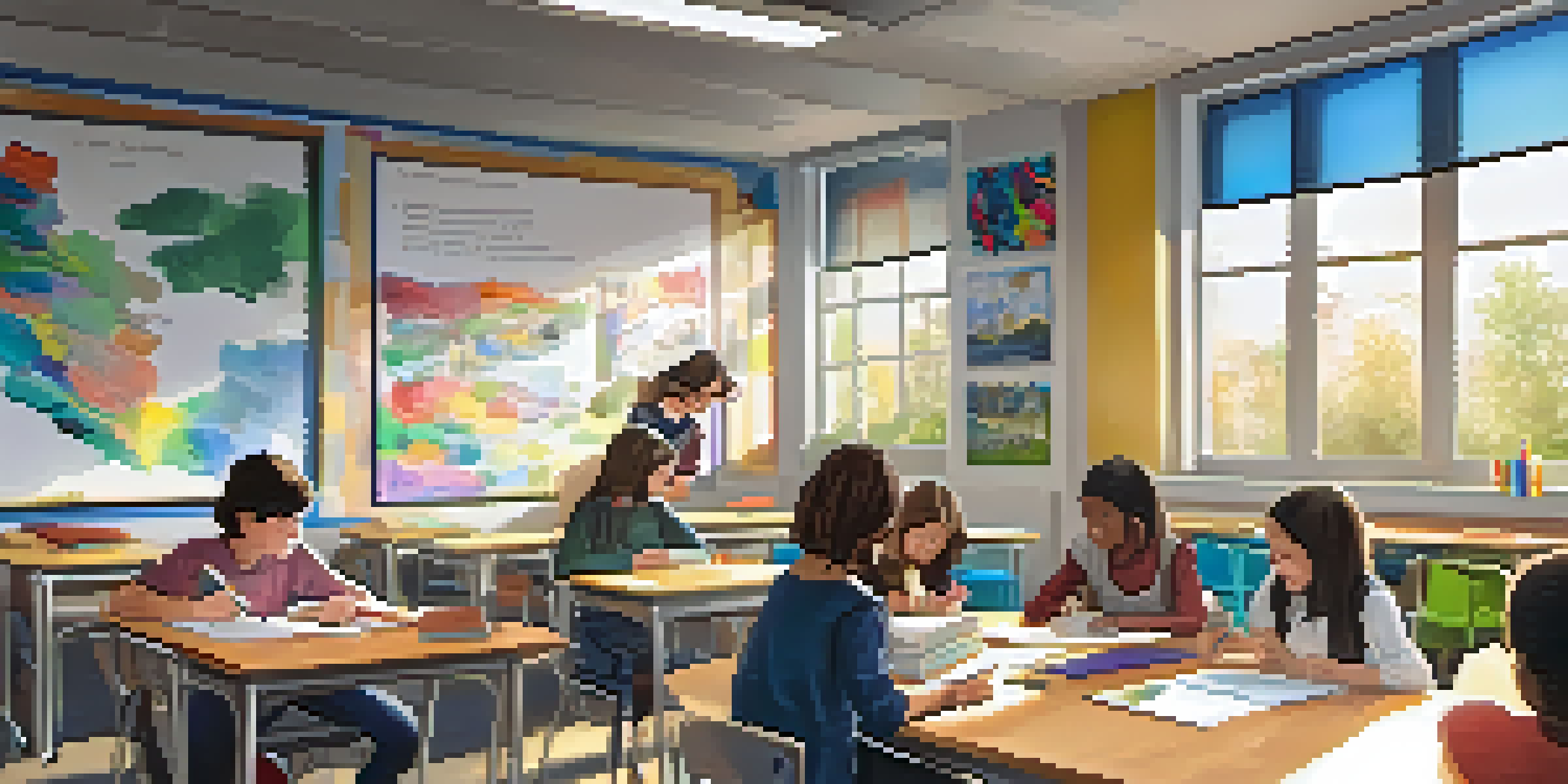Comparing Behaviorist Learning Theory to Constructivism

Introduction to Learning Theories: Behaviorism and Constructivism
Learning theories are frameworks that describe how information is absorbed, processed, and retained during learning. Two prominent theories are behaviorism and constructivism, each offering unique perspectives on how learning occurs. While behaviorism focuses on observable behaviors and the responses to external stimuli, constructivism emphasizes the learner's active role in constructing knowledge.
The only thing that interferes with my learning is my education.
Understanding these theories is essential for educators and learners alike, as they influence teaching strategies and learning experiences. For instance, a behaviorist approach might involve rewarding students for correct answers, while a constructivist approach might have students engaging in group projects to explore concepts deeply. This article will compare and contrast these two theories to highlight their strengths and applications.
By examining the core principles of each theory, we can better appreciate how they shape educational practices and student engagement. Ultimately, both behaviorism and constructivism provide valuable insights into the learning process, but they do so from very different angles.
Core Principles of Behaviorist Learning Theory
Behaviorism, rooted in the works of psychologists like B.F. Skinner and John Watson, posits that all behaviors are acquired through conditioning. This theory emphasizes the importance of reinforcement and punishment in shaping behavior. For instance, when a student correctly answers a question and receives praise, they are more likely to repeat that behavior in the future.

In a behaviorist classroom, the focus is often on clear objectives and measurable outcomes. Teachers might use techniques such as drills, repetition, and rewards to encourage desired behaviors. The goal is to create a structured learning environment where students can progress through a series of steps toward mastery.
Behaviorism: Focus on Observable Actions
Behaviorism emphasizes the role of reinforcement and punishment in shaping observable behaviors, often using structured techniques to achieve clear, measurable learning outcomes.
However, critics argue that behaviorism overlooks the internal cognitive processes involved in learning. While it effectively addresses observable behaviors, it may not fully capture how students think, feel, and relate to new information, which can limit its effectiveness in more complex learning scenarios.
Understanding Constructivism in Learning Environments
Constructivism, on the other hand, is built on the idea that learners actively construct their own understanding and knowledge of the world through experiences. This theory suggests that learning is a process of making sense of new information by linking it to prior knowledge. Think of it like building a house: each bit of knowledge is a brick that contributes to a larger structure.
Learning is not a spectator sport. Students do not learn much just by sitting in class and listening to teachers, memorizing prepackaged assignments, and spitting back answers.
In a constructivist classroom, educators facilitate learning by creating opportunities for exploration, collaboration, and problem-solving. Students might engage in hands-on activities, discussions, or project-based learning, allowing them to engage with the material in a meaningful way. This approach encourages critical thinking and fosters a deeper understanding of concepts.
Moreover, constructivism recognizes the importance of social interactions in learning. By collaborating with peers, students can share different perspectives, challenge each other's ideas, and co-create knowledge. This social aspect makes learning a more dynamic and engaging process.
Comparing Learning Outcomes: Behaviorism vs. Constructivism
When it comes to learning outcomes, behaviorism often results in quick, measurable achievements. For example, a student might rapidly learn multiplication facts through repetitive drills and immediate feedback. This approach can be particularly effective for mastering foundational skills or rote memorization.
In contrast, constructivism tends to produce deeper, more meaningful learning experiences. Students who engage in project-based learning may not only grasp scientific concepts but also develop skills like teamwork and communication. This type of learning prepares students for real-world applications, making the knowledge more relevant and enduring.
Constructivism: Active Learning Engagement
Constructivism promotes active learner participation, encouraging students to build their understanding through experiences, collaboration, and problem-solving.
However, the effectiveness of each approach can depend on the subject matter and the individual learner. Some students may thrive in a structured, behaviorist environment, while others may excel when given the freedom to explore and construct their own understanding.
The Role of the Teacher in Each Learning Theory
In behaviorism, the teacher serves as an authority figure and a source of knowledge. Their role is to provide clear instructions, set expectations, and deliver consistent feedback. This teacher-centered approach ensures that students understand what is required to succeed and reinforces learning through rewards and consequences.
Conversely, in a constructivist framework, the teacher acts more as a facilitator or guide. Rather than dispensing knowledge, they create an environment where students can explore, ask questions, and collaborate with their peers. This shift allows learners to take ownership of their education, driving the process through curiosity and inquiry.
This distinction highlights a fundamental difference in pedagogical approaches. While behaviorist teachers focus on directing student learning, constructivist educators emphasize fostering an environment where students can construct their own understanding through active engagement.
Real-World Applications of Behaviorism
Behaviorism finds practical applications across various educational settings, particularly in areas where specific skills need to be taught. For instance, in language learning, repetitive exercises and immediate feedback can help students master vocabulary and grammar rules effectively. Many online learning platforms use gamification strategies that reward users for completing tasks, demonstrating behaviorist principles in action.
Additionally, behaviorist techniques are often employed in classroom management. Teachers may use positive reinforcement to encourage good behavior among students, creating a structured environment conducive to learning. This approach can be particularly effective for younger students who respond well to clear expectations and praise.
Different Roles of Teachers Explained
In behaviorism, teachers direct learning through clear instructions, while in constructivism, they facilitate exploration and collaboration among students.
However, the reliance on behaviorist methods alone may not suffice for all subjects or age groups. While they can enhance skill acquisition, integrating other approaches can provide a more comprehensive educational experience.
Constructivism in Practice: Best Examples
Constructivism shines in project-based learning environments where students tackle real-world problems and engage in collaborative projects. For example, a science class might conduct experiments to understand ecological impacts, allowing students to connect theory with practical applications. This hands-on approach fosters critical thinking and deeper understanding.
Moreover, technology plays a significant role in constructivist classrooms. Tools like online discussion forums and collaborative software encourage students to share ideas and work together, regardless of their physical location. This aspect of constructivism not only enhances learning but also prepares students for a globalized world.

Ultimately, the success of constructivist methods often hinges on the teacher's ability to create an inclusive, supportive environment that encourages exploration. When students feel safe to express their thoughts and questions, they are more likely to engage deeply with the material.